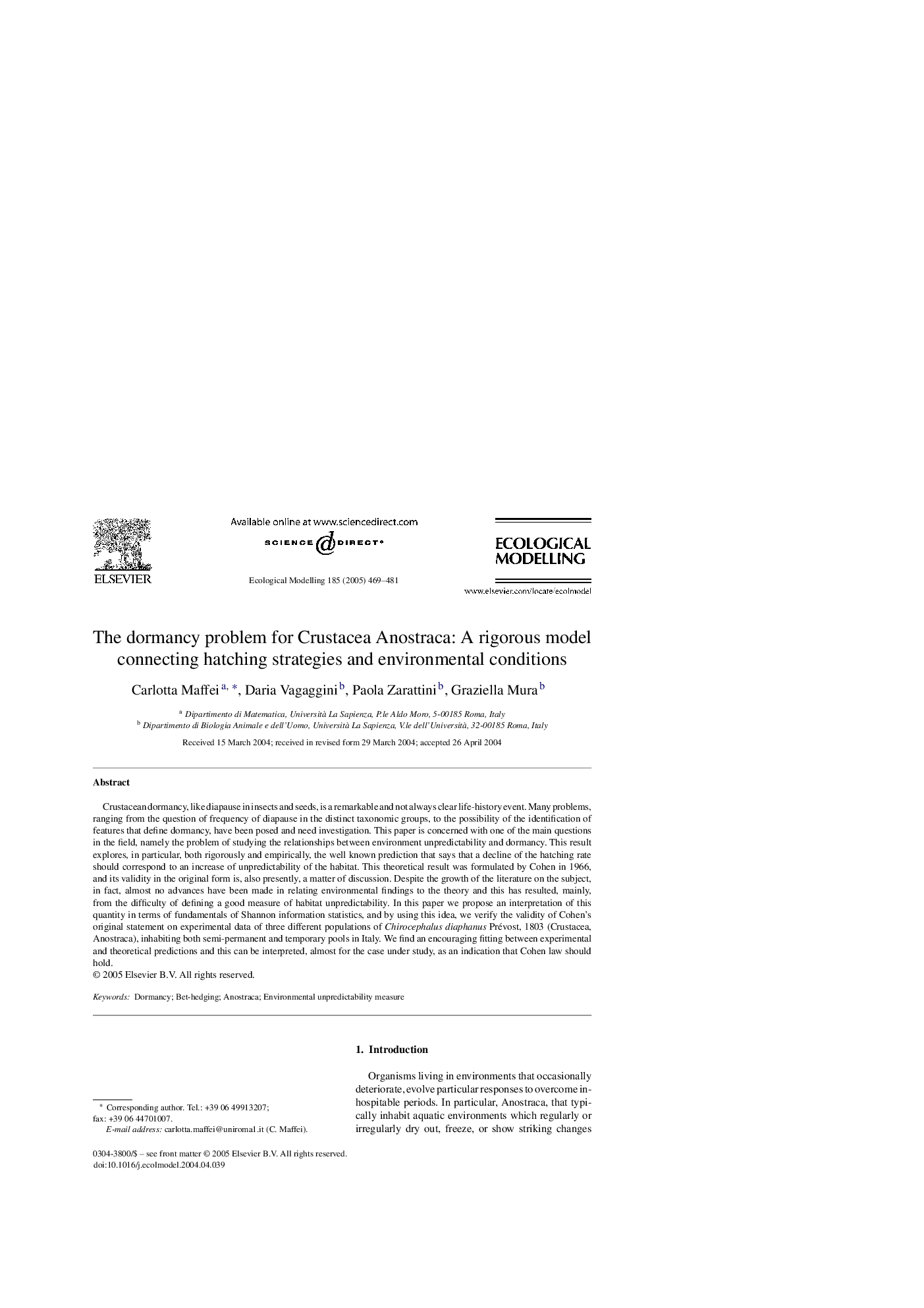| Article ID | Journal | Published Year | Pages | File Type |
|---|---|---|---|---|
| 9443400 | Ecological Modelling | 2005 | 13 Pages |
Abstract
Crustacean dormancy, like diapause in insects and seeds, is a remarkable and not always clear life-history event. Many problems, ranging from the question of frequency of diapause in the distinct taxonomic groups, to the possibility of the identification of features that define dormancy, have been posed and need investigation. This paper is concerned with one of the main questions in the field, namely the problem of studying the relationships between environment unpredictability and dormancy. This result explores, in particular, both rigorously and empirically, the well known prediction that says that a decline of the hatching rate should correspond to an increase of unpredictability of the habitat. This theoretical result was formulated by Cohen in 1966, and its validity in the original form is, also presently, a matter of discussion. Despite the growth of the literature on the subject, in fact, almost no advances have been made in relating environmental findings to the theory and this has resulted, mainly, from the difficulty of defining a good measure of habitat unpredictability. In this paper we propose an interpretation of this quantity in terms of fundamentals of Shannon information statistics, and by using this idea, we verify the validity of Cohen's original statement on experimental data of three different populations of Chirocephalus diaphanus Prévost, 1803 (Crustacea, Anostraca), inhabiting both semi-permanent and temporary pools in Italy. We find an encouraging fitting between experimental and theoretical predictions and this can be interpreted, almost for the case under study, as an indication that Cohen law should hold.
Keywords
Related Topics
Life Sciences
Agricultural and Biological Sciences
Ecology, Evolution, Behavior and Systematics
Authors
Carlotta Maffei, Daria Vagaggini, Paola Zarattini, Graziella Mura,
